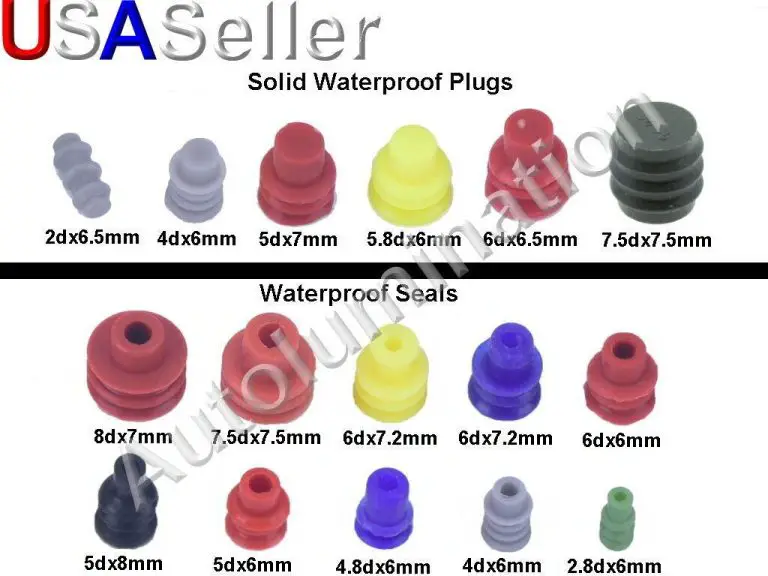Can You Use Silicone Moulds For Slip Casting?
Slip casting is a technique used in ceramics and pottery to create objects with hollow interiors or precise details that are difficult to achieve with other methods. It involves pouring liquid clay, known as slip, into a porous mould. The clay adheres to the mould walls, while excess slip drains away. Once the correct thickness is achieved, the remaining liquid clay is poured out to leave a hollow shell. The shell is allowed to dry before being fired in a kiln. Slip casting allows for uniform wall thickness and exact reproduction of the mould design.
Silicone rubber moulds are a popular choice for slip casting due to their durability, flexibility, and ability to reproduce fine details. The porous silicone allows water from the liquid slip to permeate through the mould walls, while the clay particles build up on the surface. Silicone moulds can be used to create multiple castings, hold up well to repeated pourings, and do not require mold release agents. They are more expensive than plaster moulds but provide benefits that make them ideal for casting delicate and intricate pieces.
Advantages of Using Silicone Moulds
Silicone molds offer a number of advantages for slip casting:
Flexibility – Silicone is flexible and elastic, which allows for easy demolding of cast pieces. The flexibility allows the mold to bend and flex as pieces are removed without fear of cracking or damage (Source).
Durability – Silicone molds are very durable and can last through many castings before wearing out. The material does not degrade easily over time with exposure to water and clay. Silicone molds can withstand the frequent use needed for slip casting (Source).
Easy Release – The flexibility of silicone allows cast pieces to be easily released from the mold once dried. The non-stick nature does not require release agents for the clay slip. Cast pieces can generally be pushed out by hand without sticking. This allows for quick turnover when mass producing cast pieces.
Best Silicone Materials for Slip Casting
When choosing a silicone for slip casting moulds, the two main options are platinum silicone and tin silicone:
Platinum Silicone
Platinum silicone is the most common choice for slip casting moulds. It offers high tear strength, flexibility, and heat resistance up to 500°F. Platinum silicone has excellent chemical resistance and can withstand repeated casting with little degradation. It’s more expensive than tin silicone, but provides a longer mould life. Popular platinum silicone brands used for slip casting include Mold Max and Dragon Skin.
Tin Silicone
Tin silicone is a budget-friendly option for slip casting moulds. It has good flexibility and decent tear strength, though not quite as high as platinum silicone. Tin silicone moulds can withstand temperatures up to 390°F. The material is sensitive to sulfur inhibition, so specialized tin silicones designed for mold making should be used. Tin silicone moulds have a shorter lifespan than platinum, with many crafters reporting around 20-30 casts before degradation. Popular brands include Oomoo 30 and Smooth-On Mold Star 15T.
Mould Design Considerations
When designing a silicone mould for slip casting, there are a few key factors to consider:
Thickness – The silicone needs to be thick enough to hold its shape and withstand the pressure of the liquid clay. Typically a thickness of 1/4″ to 1/2″ is recommended. Thicker silicone will last longer through repeated castings.
Undercuts – Any undercuts or deep recesses in your master model design will lock the piece in the mould, making demolding difficult or impossible. Avoid undercuts in your design.
Draft Angles – Include an appropriate draft angle of 1-5 degrees on any vertical surfaces of your design. This will make the finished cast easier to remove from the mould without tearing or distorting the silicone.
Paying attention to these design factors will result in a reusable silicone mould that can withstand many successful slip casting cycles.
Making the Silicone Mould
To make the silicone mould, you’ll first need a mold box to contain the liquid silicone as it sets. The mold box should be made from a rigid material like wood, acrylic, or plastic. It needs to be watertight and able to withstand the weight of the silicone. The interior dimensions of the box will determine the size of your finished mould.
Before pouring the silicone, the inside of the mold box needs to be coated with a release agent. This prevents the silicone from sticking to the box. Common release agents include petroleum jelly, silicone sprays, and special wax formulas. Apply a thin, even layer across all interior surfaces. Avoid build up in corners or crevices.
Prepare the silicone according to the manufacturer’s directions. Thoroughly mix the two silicone components together quickly but carefully to avoid introducing bubbles. Most silicones set within 24 hours, some as quickly as 4 hours. Pour the mixed silicone into the prepared mold box. Tap the box on the work surface to help release any trapped air bubbles. Optionally, a vacuum degassing chamber can be used to remove bubbles.
Allow the silicone to fully cure before attempting to remove it from the box. Refer to the product instructions for the recommended cure time. Once cured, the finished silicone mould should release easily from the mold box interior. The mould is now ready for the slip casting process.
Preparing the Clay Slip
The clay slip is a crucial component for successful slip casting. The recipe and viscosity of the slip must be carefully controlled. Slips are typically made from a clay casting body specially formulated for slip casting. According to ceramicartsnetwork.org, “The process of slaking clay to make it into slip is a simple one. Step one is to have a 5-gallon bucket filled 60-75% with your bone-dry clay body.”
A good casting slip recipe contains 70-75% clay, 20-25% water, and 3-5% deflocculant such as sodium silicate or Darvan 7. The deflocculant prevents clumping and keeps the clay particles suspended evenly. The claybucket.com recommends “In a 5 gallon bucket, first add 2 gallons of water, weigh out 68 grams of Darvan, add 2/3 of the Darvan first and whisk for 5 minutes.”
The viscosity of the slip is crucial. It must flow freely but not be too thin. Using a viscosity measurement tool, aim for a viscosity between 1.7-2 centipoise. The slip should pour smoothly like warm honey. Test the viscosity regularly as you mix the slip.
Filling the Mould
When pouring the prepared clay slip into the silicone mould, it’s important to do so slowly and carefully to avoid trapping air bubbles. According to Old Forge Creations, you’ll want to pour the slip in one spot at the top of the mould and let it gradually fill the mould, rather than pouring across the whole top which can lead to bubbles. Pour at a slow, steady rate until the mould is full.
To further avoid trapping air, tap the sides of the mould gently as you pour to encourage any bubbles to rise to the surface. You can also use a straw or pipette to blow bubbles out. Let the excess slip drain out – silicone moulds are flexible so you can bend them to pour out excess. Wipe away any slip on the surface of the mould to leave a clean and smooth casting.
Getting the pour right takes some practice, so expect some trial and error at first. But taking care with a slow pour and gently tapping while filling can help minimize air bubbles in your finished ceramic castings.
Drying and Firing
After filling the mould, it’s crucial to let the clay slip properly dry before removing it. According to the Sporvil article on slip casting (https://www.sporvil.com/blog/slip-casting-of-ceramics/), the cast pieces should be left in the moulds during the initial drying phase, which allows them to dry slowly and evenly to avoid cracking or warping. It’s recommended to let pieces dry for 12-24 hours or until they reach the “leather hard” stage.
The next step is to carefully remove the pieces from the moulds and allow them to dry fully. It’s important that pieces are bone dry before firing to avoid defects. Let them air dry for several days, and use a low temperature at first (100-150°F) to remove any remaining moisture. Ramp up the temperature gradually to 500-800°F for bisque firing depending on the clay and desired results, as outlined on The Crucible’s slip casting guide (https://www.thecrucible.org/slip-casting-in-five-steps/). Higher temperatures up to 1200-2200°F can be used for glaze firing.
Follow the manufacturer’s instructions for recommended firing schedules. Pay close attention to the ramp up and cool down times to prevent cracking. Use kiln cones to monitor the firing progress. The bisque and glaze firings will harden and finish the ceramic pieces.
Demolding
Knowing the right timing is crucial for successfully demolding slip cast pieces from silicone molds. If you try to demold too early, the clay will not have dried enough and can easily become deformed. According to one Reddit user’s experience shared on this thread, it’s best to wait at least a few hours, up to overnight, before attempting to demold. The exact drying time will depend on factors like the climate and thickness of the cast piece.
When demolding, go slowly and gently to avoid deformation. Start by carefully flexing the edges of the mold to break the suction. Slowly peel back the mold from the surface at an angle rather than pulling straight up. Support the cast piece from underneath as you work around the mold. Be patient and take your time through this process. Rushing can easily damage the cast piece.
Some slip casters recommend lightly dusting the molded piece with talc or cornstarch before demolding to help it release more smoothly. Others suggest gently blowing into any deep crevices to ensure the piece has sufficiently dried before attempting to pry it loose.
With practice and observation, you’ll get a feel for the right demolding timing and technique for your particular silicone molds and casting setup.
Troubleshooting
Common problems and solutions when slip casting with silicone moulds:
– Clay sticking to mould – This is often caused by undercutting the mould design or not applying mold release. Try using a release agent like vaseline or baby powder and avoid undercuts when designing the mould (source).
– Air bubbles in cast piece – Tap mould firmly after pouring to release air bubbles. Allow slip to fully saturate mould and sit for a few minutes before pouring excess back into container. Consider vacuum degassing the slip.
– Cracking/warping as clay dries – Slow down drying by covering mould with plastic or damp cloths. Ensure even thickness throughout the cast piece. Consider adding grog to the casting slip to reduce shrinkage.
– Pinholes/rough texture on surface – Strain slip through a fine mesh before pouring into mould. Tap mould after pouring to release air bubbles. Make sure slip is fully saturated before pouring excess back into container.



